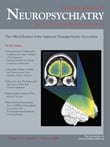Music and the Debate on Cerebral Dominance: The Classic Work of Bever and Chiarello
“Dominance of the left hemisphere for such analytic functions would explain dominance of the right ear for melody recognition in experienced listeners: as their capacity for musical analysis increases, the left hemisphere becomes increasingly involved in the processing of music. This raises the possibility that being musically sophisticated has real neurologic concomitants, permitting the utilization of a different strategy of musical apprehension that calls on left hemisphere functions.” 1
References
Information & Authors
Information
Published In
History
Authors
Metrics & Citations
Metrics
Citations
Export Citations
If you have the appropriate software installed, you can download article citation data to the citation manager of your choice. Simply select your manager software from the list below and click Download.
For more information or tips please see 'Downloading to a citation manager' in the Help menu.
View Options
View options
PDF/EPUB
View PDF/EPUBGet Access
Login options
Already a subscriber? Access your subscription through your login credentials or your institution for full access to this article.
Personal login Institutional Login Open Athens loginNot a subscriber?
PsychiatryOnline subscription options offer access to the DSM-5-TR® library, books, journals, CME, and patient resources. This all-in-one virtual library provides psychiatrists and mental health professionals with key resources for diagnosis, treatment, research, and professional development.
Need more help? PsychiatryOnline Customer Service may be reached by emailing [email protected] or by calling 800-368-5777 (in the U.S.) or 703-907-7322 (outside the U.S.).

